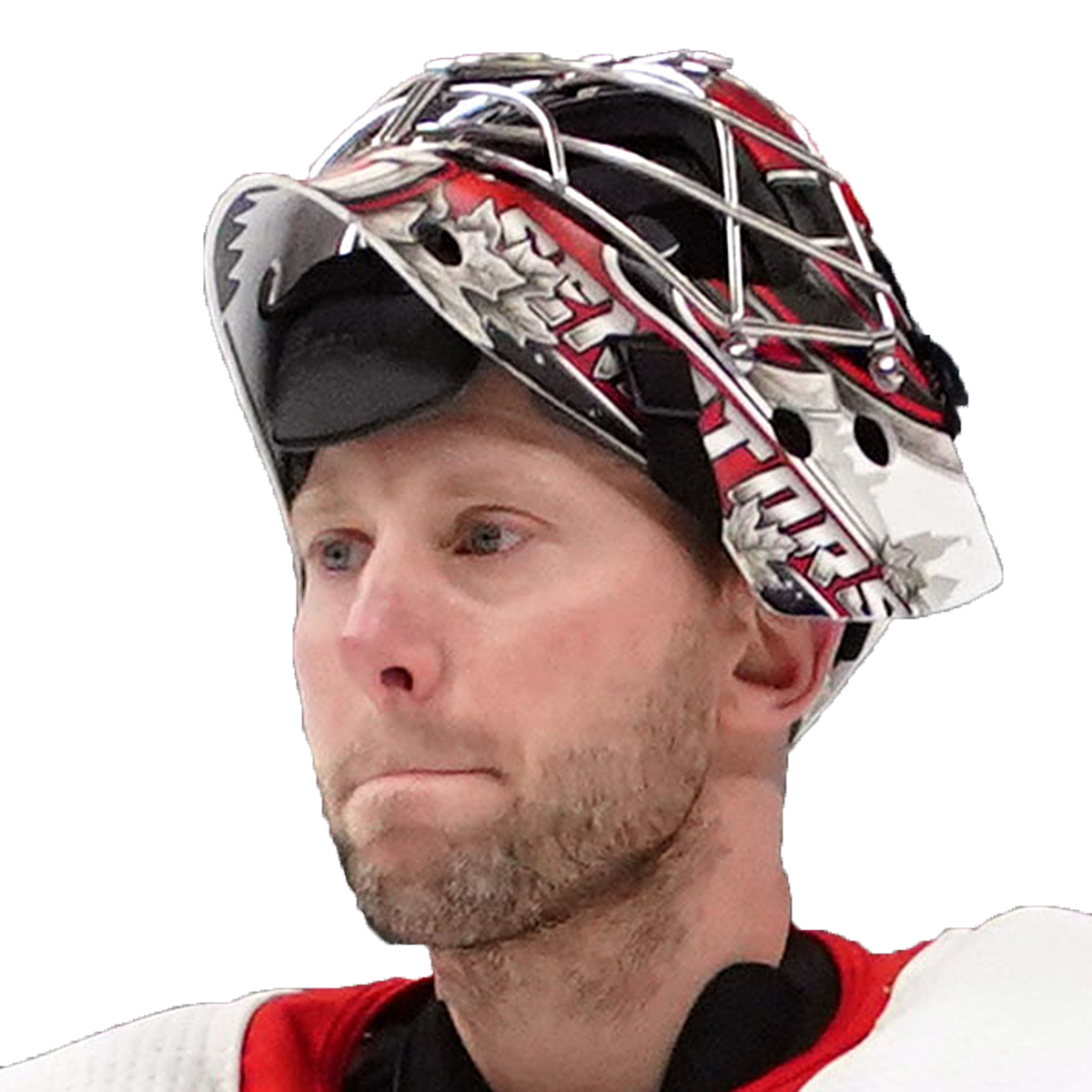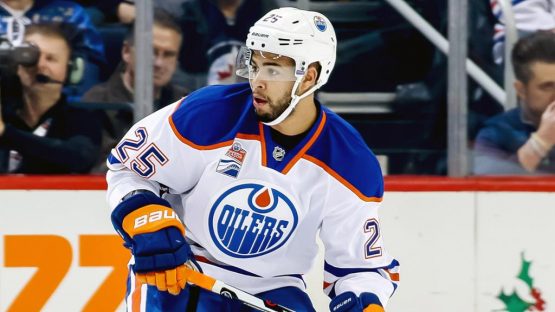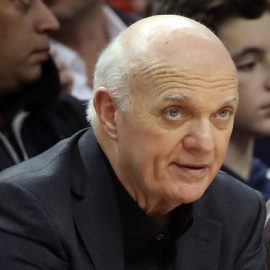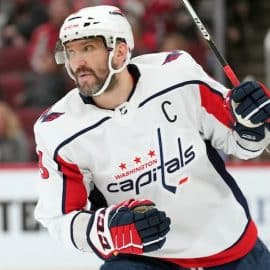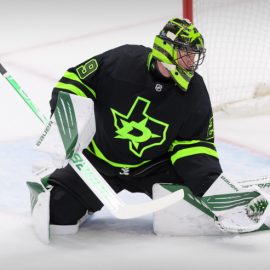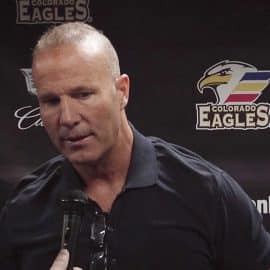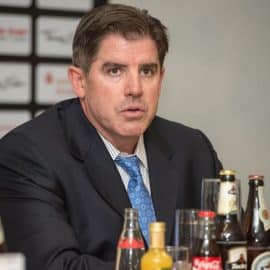What a wild swing the past 48 hours have provided for fans of the Ottawa Senators.
It all started out so well.
After unveiling their beautiful set of jerseys earlier on CTV News Ottawa, the Senators used Alex Trebek to draft the dynamic Tim Stützle with the third overall pick in a creative video vignette that proved to be one of the coolest moments of the first round.
Between the feelgood moment of seeing a local celebrity who’s battling stage-IV pancreatic cancer announce the most anticipated draft selection since Jason Spezza was selected in 2001 and seeing Stützle pull his new black kit with the number 88 adorned on it, it was perfect.
No, it was better than perfect.
If finally felt like there was a sense of normalcy around this franchise.
For an organization that has struggled so hard of late to communicate efficiently or do the most reasonable of things right, Tuesday was a beacon of light that would hopefully portend a fresh start and signal new beginnings.
The online buzz was overwhelmingly positive.
The jerseys looked fantastic and the opportunity to add a player like Stützle who instantly becomes Ottawa’s most skilled forward is incredibly exciting.
If Stützle can stick at the centre position, it will fill a huge hole in the organization’s depth chart and finally gives the Senators an offensive element to play alongside Brady Tkachuk.
That is not to say there are risks involved, there obviously are, but with the Los Angeles Kings selecting Quinton Byfield with the number two selection, Pierre Dorion and his staff fulfilled their promise of taking the forward of the big three who was passed over the Rangers and Kings.
Not everyone will love the Senators’ selection of Jake Sanderson with the fifth overall selection because of all the elite offensive talents available at that range, but seeing a prospect who was described as the best defensive defenceman or best defenceman in the words of the Senators’ general manager should be a fit for an organization that has literally struggled to defend since the team’s Cup Final appearance in 2007.
Since their defeat to the Anaheim Ducks, the Senators’ blue line has deteriorated and what was once an organizational strength has turned into the team’s Achilles heel.
Sanderson is not the prototypical hulking defenceman either.
The son of Hartford Whalers great Geoff Sanderson has the same blazing speed who relies upon a good stick and excellent gap control to defend players one-one-one.
Although there is some skepticism that Sanderson’s offensive production in the second half of last season will translate to good production at the NHL level, Sanderson possesses excellent puck-moving skills that will be welcomed in Ottawa.
For too long this organization has erred in its evaluations of defensive defencemen over the past 15 years and too often, it has resulted in acquiring players who spend all their time defending within their own end simply because they struggle to regain the puck and transition it to an offensive rush.
Along with Thomas Chabot, Sanderson should provide the organization with high-calibre defencemen on the left side that they can build two competent pairings with. With Erik Brannstrom, Jacob Bernard-Docker and Lassi Thomson thrown into the mix, the Senators hopefully have a strong and deep defensive corps that will match up well with any team in the Eastern Conference.
Understandably, given the debate (even within the Senators organization) on whether Stützle will wind up at centre or at left-wing long-term and the fact that the Senators took a defenceman with the fifth overall selection, there is a risk that the organization missed an opportunity to select a centre who projects to safely stay at the position like a Marco Rossi or even a Cole Perfetti.
Projecting the next season or two out, it will take time for the Senators’ most impactful prospects to reach the NHL and develop into productive players who help this franchise move forward in its development into a contender.
Knowing that, perhaps there will be ample opportunity for the organization to add such a player in the next two drafts via the draft lottery. And as I mentioned earlier, no one should overlook the possibility that Stützle can develop into the kind of dynamic two-way centre who drives possession and seems to anchor every Stanley Cup contender’s first line.
The Senators are going to give him every chance to develop and become that player.
Despite Pierre Dorion’s indications earlier in the week that the team may move some of its stockpiled draft picks to add some established NHL talent to the Senators’ roster, the general manager held onto the 28th overall selection that it acquired in the Jean-Gabriel Pageau trade and used the pick to select Ridly Greig from the WHL’s Brandon Wheat Kings.
Greig can play centre, but he probably projects best as a left-winger moving forward and in 56 games last season, he scored 26 goals and 60 points. Although he lacks some of the offensive flash of some of his peers, Greig produced at a relatively high level while displaying the kind of pugilistic shitbaggery traits that his teammates will relish and the opposition will hate.
Drafting players with NHL bloodlines seems to be a recurring theme for the Senators.
With Brady Tkachuk, Christian Wolanin and now Jake Sanderson having fathers who played in the NHL, Ridly’s father Mark spent nine seasons in the NHL. Interestingly, Mark played a few seasons with Geoff Sanderson, Luke’s dad, in Hartford.
Like the Sanderson pick however, the Senators opened the door to second-guessing because the selection meant passing on some offensively gifted talents.
It was a predicament that Scott Wheeler detailed in an article ranking the first-round winners and losers for The Athletic.
“The Senators had an opportunity to re-shape their first line with two forwards at the top of this draft. Brady Tkachuk and Drake Batherson are great pieces. So are Shane Pinto Josh Norris, Alex Formenton and the rest. But the difference between prospects like Perfetti and Rossi and those names is a heck of a lot wider than the one between Sanderson and what the Senators already have coming in Thomas Chabot, Erik Brannstrom, Lassi Thomson, and Jacob Bernard-Docker. Sanderson is a fabulous prospect and became my No. 2 D prospect in the draft by a decent margin as the year progressed.
…
I think the Senators could regret their last two picks, even if they make it (which they both well could) because better players were taken after them.”
Wheeler’s reasoning certainly has merit to it.
The Senators’ pipeline is riddled with players who project to be middle-six forwards and bottom-four defencemen.
Entering the draft, their system’s most recognizable deficiency was the lack of high-end offensive skill. They obviously got that in Stützle, but there was an opportunity to add it with the fifth and 28th overall selections.
Whether that will come back to haunt the team will simply remain to be seen, but the players that Ottawa selected will unquestionably be strong foundational players to build around and tor The Athletic’s Corey Pronman, his optimistic projection of the Senators’ first round fueled his decision to award the Senators with an ‘A’ letter grade for their draft.
After the Senators’ first three selections, the organization had four second-round picks slated and the prevailing thought was that Ottawa’s first round choices and organizational depth would afford the organization to roll the dice on some boom or bust prospects.
With the 33rd overall, the organization took Roby Järventie, a left-winger out of Ilves in the Finnish Liiga. The selection represented a welcomed departure from modern tradition. For the first time since the 2005 NHL Draft under John Muckler, the Senators selected two Europeans in the same draft who weren’t playing in Sweden or North America.
Blame the Senators’ small scouting staff or unwillingness to draft players that they don’t have easier access to and more familiarity because of the increased viewing opportunities. Being a teammate of last year’s first-round pick Lassi Thomson in 2019-20 at Ilves, probably helped Järventie’s cause.
Scouts love Järventie’s strength and size and willingness to these tools to create space to generate shots.
In a pre-draft rankings piece, Scott Wheeler praised Järventie’s ability as “a dangerous catch-and-release shooter” which allows him to be dangerous in the middle of the ice, but ultimately, Wheeler projected Järventie to be a “third-line winger who can give a line a little more size, power and physicality.”
Following Järventie’s selection, Dorion’s trigger finger started itching.
Earlier in the morning after Dorion, indicated that Anders Nilsson’s recovery from a concussion was not progressing well, the organization dealt the 52nd overall selection to the Pittsburgh Penguins for goaltender Matt Murray.
At 26 years of age, Murray is young enough and has the experience the organization believes will allow him to be part of this team’s core moving forward.
Given the Senators’ depth and stockpiling of picks, trading a mid-second rounder for a goaltender who has won two Stanley Cups already seems like a small price to pay – especially if he can return to the form that he exhibited in the first few years of his career.
Knowing that Murray is still relatively young and has had success with the Penguins, the fact that the organization is eager to move on is a bit of a red flag, even if it is a decision driven in part by a motivation to cut salary.
The risk for the Senators is that Murray has had an up-and-down career and in the past few years, his performance has waned.
According to Evolving-Hockey.com’s ‘Goals Saved Above Expectated’ (GSAx), Murray has posted a negative GSAx in each of the last three seasons after posting some very good metrics in his first two campaigns.
In a post-trade roundtable, The Athletic Pittsburgh’s Josh Yohe, Rob Rossi and Sean Gentille held court to discuss how Murray’s performance has turned.
Yohe: “I think he probably had too much success too soon and, at some point, became difficult to coach. He had a tendency to get away from proper techniques when he’d be away from the team for an offseason or a long stretch. His physical gifts were never overwhelming, and it could be that the NHL figured him out to some extent.”
Rossi: “Rossi: The Penguins were never as complete as they were from March 2016 to June 2017. Everybody expected he would become a franchise-caliber goalie because of what he did in those 2016 and 2017 postseasons, but Murray’s brilliance had come in short (albeit highly pressurized) stints playing behind teams that had few weaknesses. The Penguins became more flawed right when Murray was tasked with being the No. 1 goalie on his own. Maybe he was merely the right goalie at the right time for about 16 months and not ready for what was to follow?”
Gentille: “My guess — and this is dart-throwing, as most stuff with goalies tends to be — is that his lack of athleticism came back and bit him. His superpower was always positioning, technical ability, mental toughness, all of that. That’s all fine stuff to rely upon, but it’s also nice to have elite physical gifts as a trump card.”
As a restricted free agent, Murray’s qualifying offer will be $3.75 million and an extension will likely cost significantly more than that. Contract negotiations could get complicated simply because of the risks involved. Murray’s probably looking to hit a home-run because of his past accomplishments, but the Senators should be leery of overcommitting themselves to an inconsistent netminder who’s only enjoyed success behind some very strong Penguins teams. With the organization’s goaltending depth, the presence of Murray for an extended time is one less spot for one of their prospects to graduate to the NHL level. And considering how all of Joey Daccord, Marcus Hogberg, Filip Gustavsson and Kevin Mandolese will be playing professionally next season, things could get congested quickly if some of these prospects take a step forward in their development.
None of that really sounds reassuring, but maybe playing for an up-and-coming Senators team that will provide him with a fresh start and opportunity to be the de facto number one goaltender will help Murray reassert himself and return to the play that he exhibited during his first two years in the league.
The loss of the second-round pick may not wind up coming back to haunt the Senators, but it is worth acknowledging that it was still a valuable asset.
Considering the free agent alternatives in an uncertain pandemic-created market or the likelihood that it would have been cheaper to look at acquiring a goaltender next summer when teams are forced to protect only one of their goaltenders in the Seattle expansion process, asset management in this situation can be scrutinized. There is an argument to be made that the Senators could have either found a less expensive stopgap in a season in what’s likely a non-playoff season or Pierre Dorion should have been able to find a better solution at a cheaper cost next summer.
Following the Murray acquisition, the Senators made another trade packaging their 59th and 64th overall picks to move up to acquire the division rival Maple Leafs’ 44th overall selection.
For the second time in the draft, the Senators drafted a left defenceman who will play at the University of North Dakota in Tyler Kleven.
Between Jake Sanderson, Tyler Kleven, Shane Pinto, Jacob Bernard-Docker and Jonny Tychonick (since transferred), with the volume of prospects that the Senators are taking out of UND, the organization should just make it one of their farm teams.
Kleven stands at 6’4” and was a part of the USNTDP. He is renowned for being that archetypal bulky, physical, defensive defenceman.
The decision to trade multiple picks to acquire another left defenceman strikes me as odd considering that the Senators added Jake Sanderson earlier in the draft and already have Thomas Chabot entrenched on the roster. Senators management has expressed a preference to have Erik Brannstrom play his natural left-side and there is also Christian Wolanin in the mix as well. Given the depth within the organization and how easy it is to find third pairing/depth defencemen on the trade and free agent market each year, moving multiple picks to acquire a player who safely projects to be a third-pairing guy at the NHL level seems like it could be another occurrence of questionable asset management.
With the team’s fifth pick of the draft, the Senators selected Russian Egor Sokolov out of the QMJHL’s Cape Breton Screaming Eagles.
In 52 regular season games, the overage 20-year old scored a league-leading 46 goals while adding 46 assists. Like Kleven, Sokolov was not amongst Scott Wheeler’s top-100 draft eligible prospects.
Like Järventie, Sokolov is another big left-winger who is renowned for his shot and board-work. Sokolov stands 6’4” and scouts praise him for his ability and willingness to use his size to get to the dirty areas of the ice.
Some pedestrian numbers while playing on a mediocre junior team did Sokolov no favours in his previous years of draft eligibility, but after committing himself to improve his skating – a deficiency that still needs a ton of improvement — Sokolov finally had his name called on draft day.
Given his age and physical maturity, there’s a great chance that Sokolov can play in Belleville when their 2020-21 season begins.
The Senators only had one selection in the third round and they used it to select goaltender Leevi Meriläinen out of Oulun Kärpät of the Finnish Junior A league.
According to scout Jokke Nevalainen who covers prospects for DobberHockey.com, there was some surprise with the pic.
https://twitter.com/JokkeNevalainen/status/1313907400928374795
Earlier in this article, I mentioned the depth that the Senators already have at the professional level with their goaltending prospects and that’s before even mentioning that the organization traded up to select Mads Sogaard in the second round of last year’s draft.
It was an off the board selection in terms of the prospect and the organization already owning a ton of goaltending prospect capital. Although it is worth mentioning that none of Ottawa’s prospects has emerged as having a number one NHL goaltender’s upside, so maybe adding more eggs to the basket isn’t the worst thing in the world.
Regardless, Nevalainen brings up an interesting point by mentioning that many more highly ranked goaltending prospects were available at the time of Ottawa’s selection. It’s simply another pick that will likely be open to scrutiny down the road.
The Senators would later add three more left-wingers late in draft in Eric Engstrand (155th overall, 5th round, Malmö Redhawks), Philippe Daoust (158th overall, 6th round, Moncton Wildcats) and Cole Reinhardt (181st overall, 6th round, Brandon Wheat Kings).
According to Dom Luszczyszyn’s expected pick value model, no organization had accumulated more expected value than the Senators’ surplus of picks.
https://twitter.com/domluszczyszyn/status/1313132194387369987
The question is whether the Senators fell short of maximizing that expected value while potentially demonstrating an overreliance on drafting players from the same hockey program.
It could be a coincidence, but this problem could also be a function that reflects the size of the team’s scouting staff.
Fewer eyes means fewer viewing opportunities and it creates a situation where the team could simply be more comfortable taking players it sees more often. It would certainly help explain the organization’s reluctance to draft players out of the different European leagues over the past 15 years.
More than anything, this year’s draft helped shed more light on which teams have melded their traditional scouting insights with modern data and projection models. In Ottawa’s case, it feels safe to assume that they are relying on their boots on the ground approach and it’s evident in who they are passing over.
Teams should never be comprised strictly of skill.
As the past few postseasons have shown, skilled teams need to find ways to generate offence when tight-checking systems suppress the quality and volume of chances. Having talented players who can play in both ends, work the boards, preserve and win the cycle-game and are willing to engage in heavy-traffic areas are incredibly valuable, but for an organization that has stockpiled a ton of middle-six depth and bottom-four defencemen, I can understand the sentiment wishing that the organization rolled the dice a little more on some skilled players that were available at their selections.
I certainly recognize why Ottawa made the picks it did in the first round, but there’s no denying that the team has left itself open to criticism because of the talent that it left on the board.
The Senators have made some quality selections in recent years, but I also think there has been a tendency to let the organization’s draft record skate a little bit because there is a tendency to rely on the games played threshold as a reliable metric to evaluate the quality of a team’s drafting ability.
And for an organization that has praised itself for its amateur scouting ability, I think this draft is going to be invaluable for determining just how good this scouting staff is.
Considering that facet of the organization is widely regarded as one of its most trustworthy elements, their 2020 draft class will either solidify that reputation or cast some doubt on the Senators’ scouting process.
Anthony Duclair Not Qualified as an RFA
The most shocking news of the day was reserved for the end of the draft when the Senators acknowledged that they did not extend Anthony Duclair a qualifying offer by yesterday’s 5 pm deadline thereby making the Senators’ 2020 NHL All-Star representative an unrestricted free agent.
Earlier in the season for The Athletic Ottawa, I outlined the reasons why it was in the Senators’ interests to move on from Duclair while he was enjoying a career season.
Without getting into too many of the details, the substance was that the Senators should not overvalue Duclair’s offensive contributions because: 1) a lot of his production comes from the rush and when he’s not scoring, he does not do enough to sustain offensive zone possession; and 2) most importantly, his significant defensive shortcomings sink his overall value.
In looking around social media, a lot seems to be made of Duclair’s struggles during the second half of the season, but Duclair’s shot quality and volume did not look markedly different from from the stretch of play when he was lighting the lamp.
The problem for Duclair was that shooting regression was inevitably going to happen, but in the second half of the season, it swung a little too far to the other end of the spectrum.
Bad luck helped sink Duclair’s production.
Having said this, the decision not to qualify a 25-year old who is coming off a season in which he scored 23 goals and 40 points is, on its own, inexplicable.
The organization is portraying the problem as one created by the player because Anthony Duclair decided to represent himself in contract negotiations and apparently the organization were uncomfortable with the sizable gap of the terms being negotiated.
Considering the Senators’ cap situation and the fact that they are currently $42 million below the salary cap ceiling, this is an organization that will need to take on salary to reach the $60.2 million cap floor.
As an arbitration eligible player, in refusing to qualify Duclair, the Senators no longer have to worry about an arbitrator giving Duclair an award that they would not be comfortable with.
The Senators would only have the right to walk away from the arbitrator’s decision if the award was in excess of $4.5 million.
Evolving-Hockey.com’s contract prediction model projected Duclair earning a two-year deal worth an average annual value of $3.351 million. That is not an offensive number, but if the Senators are worried about paying Duclair less than $4.5 million per season on a short-term deal given the team’s payroll right now, what does that say about the state of this franchise’s finances?
And if it is a financial problem for the organization, how should fans take the organization seriously when it says it will spend to the cap ceiling starting in 2021 for a run of an unparalleled success?
In fairness, the circumstances behind the decision could come to light in the near future. Maybe this is simply a transaction that should not be looked at in a vacuum.
The organization may have better ideas on how to allocate its cap space, but how do they plan on reaching the cap floor and how much will they eclipse it by?
Most importantly, when did the organization know that they were uncomfortable with the contract extension negotiations?
For me, it’s another example of poor asset management in allowing the player to walk without returning an asset.
Irrespective of his shortcomings as a player, Duclair was still one of the team’s most entertaining players last season.
Although I expect the Senators to be a lottery team, they still need to entertain fans and sell tickets. Given their cap situation and the lack of veterans on the roster, I have a hard time believing that they could not make room for one of their more marketable players.
It just does not add up right now.
Hopefully some light will be shed on this development soon.
Add The Sports Daily to your Google News Feed!
